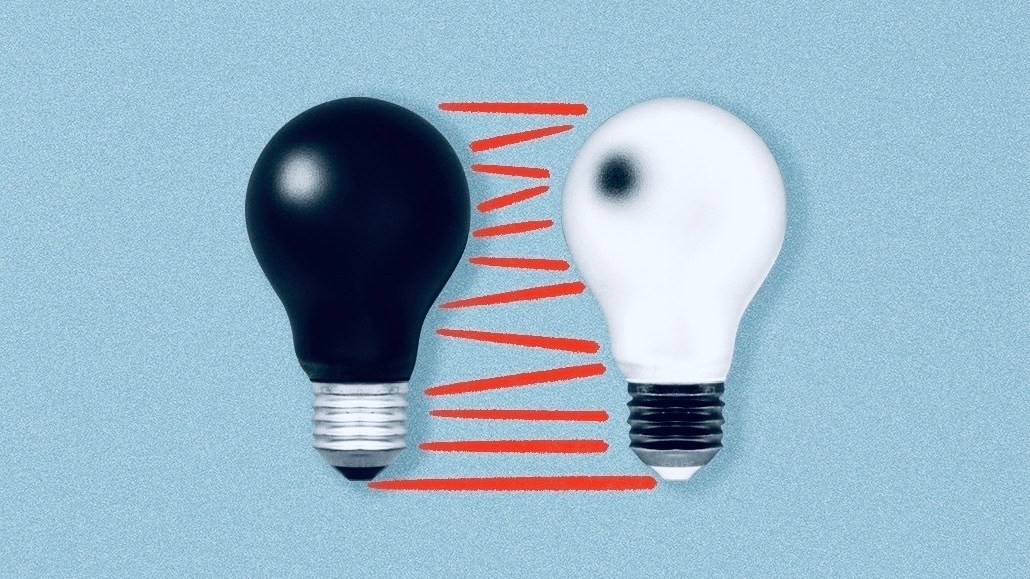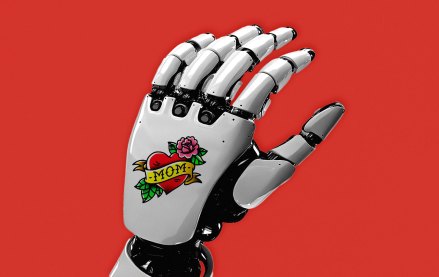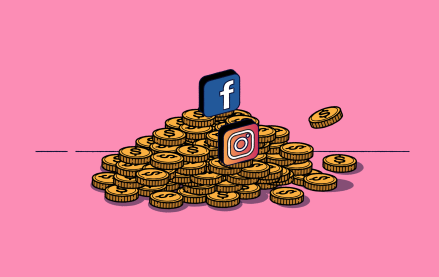Connect with execs from The New York Times, TIME, Dotdash Meredith and many more
Marketing Briefing: How the ‘proliferation of boycotting’ has marketers working understand the real harm of brand blockades

This Marketing Briefing covers the latest in marketing for Digiday+ members and is distributed over email every Tuesday at 10 a.m. ET. More from the series →
This time last year, marketers watched in real time as the Bud Light boycott put a spotlight on influencer marketing, brand boycotts and a backlash to so-called “woke” advertising. The impact of the boycotts had marketers quickly moving to be more risk averse in their marketing and advertising efforts.
Even so, brand boycotts continue apace this year with the likes of Planet Fitness, McDonald’s and others grappling with their own boycotts in recent months. While the reasons for the boycotts vary, there’s a recognition among marketers now that a brand boycott could happen regardless of their efforts – and for reasons outside of marketing and advertising – that will need to be dealt with.
“There’s this proliferation of boycotting or canceling even if you don’t have any engagement or interaction with this brand,” said Audrey Chee-Read, principal analyst at Forrester, when asked about the current landscape of brand cancelations. “Seeing people cancel or boycott, using those kinds of terminologies even if they’re not, for example, a Planet Fitness member at all. We’re in this age where it’s really more about focusing on hurting a brand reputation than it is about bottom lines.”
That said, hurting a brand reputation can certainly damage a brand’s bottomline. For marketers looking to minimize the financial and reputation pain associated with a boycott, figuring out the right response is crucial. Timeliness of the response is a major factor too, noted Chee-Read, “if you’re waiting around to see what the economic impact is, it’s a little too late.” Often how a brand responds to a boycott has the biggest impact on the sustainability of the boycott, according to agency execs, brand analysts and researchers, who noted that marketers are making a more concerted effort to prepare for a potential boycott now.
“In a world of ever-changing and diverse political and social conflict, there will always be a level of consumer disagreement when brands take a stand against a certain issue,” said Tom Ghiden, managing director, at creative shop Joan, in an email. “Boycotts can, of course, have a financial and cultural impact on a brand, but it’s how a brand prepares for, or deals with, a boycott in its early stages that determines whether these implications will stick, or if a brand can maintain its moral ground.”
Even so, it can be difficult for marketers to fully prepare for a possible boycott. While some have been in response to messages that a brand puts out taking a stand on a certain issue, others can be in response to something out of a brand’s control, making it feel possible at any time that a brand boycott could happen. That situation can feel untenable for marketers but agency execs, brand analysts and researchers say that understanding consumers more prior to a boycott can help shape how a brand responds.
“The volume feels turned up on everything,” said Ellie Bamford, chief strategy officer, North America, VML, of the current onslaught of brand boycotts as political divisions continue to ramp up, adding that the pace could “dilute the impact” of brand boycotts. “The thing [marketers] should know is the degree of polarization in [their] customers.” This will likely be increasingly important in this divided presidential election cycle.
Consumer research can help marketers prepare for a potential boycott as understanding consumers prior to its arrival can help inform what a response should be and could improve the timeliness of said response.
“Brands which understand how their core audiences’ behavior shifts are better able to proactively adapt their business, influencer, business and advertising strategies to gain a competitive edge and foster long-term loyalty,” said Ghiden. “Well-established brands can use their access to technology and AI tools to monitor the consumer and social media landscape, including tracking changes in consumer sentiment, analyzing macro trends and leveraging new data and insights without relying heavily on cookies.”
The lack of response or a bad response is often a major factor in the longevity of a brand boycott, according to agency execs, brand analysts and researchers. Even so, many factors remain out of marketers’ control and it is impossible to make all consumers happy with said response.
“It does seem like the brand response plays a big role,” said Sadie Dyer, strategy director, Siegel+Gale, a global brand experience firm. When it comes to a boycott based on a brand decision that marketers have control over there should be a sense that marketers know how they would respond to that decision. “Are you coming out with an apology or are you coming out with a support of your decision clarification?”
Aside from understanding consumers and response time, marketers also need to be clear on how their company’s are trying to grow and make sure various teams are aligned on those goals. While marketing has traditionally been charged with advertising and branding duties it’s also become more about brand “experience,” explained Nick Primola, group evp at the ANA Global CMO Growth Council.
“The insights have to be interwoven throughout the organization,” said Primola, of a company’s overall goals for growth amid an environment where brand boycotts are more frequent. “And everyone has to have visibility into the entire organization’s actions so you know if those actions are contrary to the authenticity of the organization’s stated purpose, right? Then you know, that’s going to perhaps trigger some issues that are unnecessary.”
3 Questions with Zach Pollakoff, executive creative producer at audio shop Heavy Duty Projects
Are there any notable audio trends right now that marketers should be aware of?
This feels trite to say in certain music circles, and obviously doesn’t apply to every campaign and circumstance, but, guitars are back. The trend cycle has spoken. A trap beat is no longer a quick way to signal that a brand is hip to youth culture. It requires much more nuance and research to understand to whom you are advertising and how to reach them.
Will we ever get back to full-on jingles? They work and yet marketers seem not to use them much.
Absolutely. It’s happening now, but in a tongue-in-cheek way. “The Jingle Era,” filled with brand-name callouts and earworm-hooks, was once a successful driver of sales. This is a thing of the past. Still, consumers want to identify with a brand as an entity. I think the word “jingle” implies a certain level of cheesiness, so if it’s executed in earnest, it could alienate a product’s target demo. Taking a self-aware spin on a jingle lets the audience in on the joke, and we’ve enjoyed making many of these brand-specific, lyric-driven songs.
As advertising gets more and more fragmented, how can marketers use sound to stand out?
While ubiquity is a good goal for some marketers, following the trend of “fragmented” – or maybe I’d say “segmented” – culture could be a goal. Make bite-sized pieces of content that speak to different demographics. Each crowd will appreciate you speaking their language, or at least listening to their music. Think of how quickly you bond with a stranger when they like the music you like!
By the numbers
Last year, retailers like Adidas, Bud Light and Target came under fire for marketing efforts that aimed to be more inclusive of the LGBTQ+ community, but were instead deemed “woke” and experienced backlash. Needless to say, there’s room for improvement in marketers’ approach to inclusivity. In the past year, only 55% of marketers actively marketed to or included the LGBTQ+ community in last year’s marketing efforts, according to a new study conducted by the Association of National Advertisers (ANA). See key findings from the report below:
- Almost all (93%) of marketers think it is important for the LGBTQ+ community to be visible in advertisements, an increase from 2021 when 79% of marketers thought the same.
- 82% of marketers think more positively about a company that actively markets to or includes the LGBTQ+ community in their advertising, an increase from 2021 when 66% of marketers thought the same.
- The top challenge marketers faced in the past year around executing LGBTQ+-inclusive marketing campaigns included difficulties in identifying brand-safe environments for their LGBTQ+-inclusive marketing campaigns (39%) and concern of potential consumer blowback (39%). — Kimeko McCoy
Quote of the week
“Every player is a brand in their own right now and the more they can grow their brand, the more it grows the prestige of their team and of the league.”
— Amelia Dabell, digital planning director at Fuse, a sports-focused Omnicom Media Group agency, when asked about how the NBA is speeding up its push for ballplayers to be creators too.
What we’ve covered
- The stalemate of sustainability: Who holds the responsibility of cutting carbon from digital ads?
- Inside X’s latest, desperate attempt to beguile advertisers
- How much is Possible’s future in Michael Kassan’s hands?
More in Marketing

Generative AI sparks brand safety concerns marketers know all too well
Despite concerns around brand misuse and IP, most marketers are sticking to traditional strategies.

‘Production is a big topic right now’: With AI moving beyond media, Publicis turns toward creative
The holdco is positioning AI as core infrastructure for ad production not just media buys.

Instagram offers a new guide to advertisers to convince them to try out its creator marketplace
The 26-page document aims to make the whole process quick and painless.








